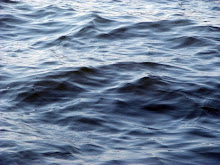
Peter Duck is a character in one of Arthur Ransome's famous children’s novels, in later life he commissioned Jack Laurence Giles to design a comfortable cruising ketch which was named after the character. The design was commissioned just after the war in 1945, built by Kings of Pin Mill in Suffolk she was completed in 1947

All my plan packages includes a set of "boatbuilding sheets" giving instructions on "how to" using epoxy, scarfing plywood panels, making laminated frames, planking a hull with strips or clinker plywood, making masts and spars, etc... These sheets are coming from a book written in French "Construction bois les techniques modernes". Until now, I did not found time to translate all these sheets into English but of course I intend to do it and even improve them. In the meantime, a builder of Meaban, Geodino Carpio Ding, living in the Philippines, has made an English version using an automatic translation tool and incorporating the pictures. This may help other builders and this document may be downloaded.
 The galley stove
The galley stove The past few weeks have seen a flurry of interesting new weblogs come online and I wanted to share them with my readers. They've all been added to my blogroll, but I felt an introduction was appropriate.
First, there are two designers who will be very familiar to many of you and who share similar approaches to their work. John Welsford and Francois Vivier are both known for their ability to adapt and invoke traditional boats into seaworthy new designs aimed at the homebuilder and using contemporary materials and techniques. These are two prolific designers and one must wonder where they can find the time to also author blogs. Glad to see it though.
These other new blogs, Traditional Small Craft and 1001 Boats were started by friends. Mike Wick, a friend and fellow member of the Delaware River chapter of the TSCA, has teamed up with Steve Bookman and Dave Lucas of Lucas Boatworks to produce a weblog devoted to the history and building of the small craft of New Jersey and the Delaware River Basin. Off to a great start. 1001 Boats is the brainchild of fellow blogger Max Taylor, aka the Burlsledon Blogger with a big assist from Michael Bogogger, aka Doryman. An elegantly simple idea: a blog devoted to posting your favorite boats. I predict the list will eventually top 1001! I have been invited as a contributing editor and plan to do just that. Contribute, but the beauty of it is, so can you. The site is also sponsoring two charities, so you can contribute in more ways than one!
All of these new weblogs are interesting and informative and beautifully done, and to all their respective authors I'd like to say thank you and well done. Oh,and by the way, I am also working on a new blog, not quite ready yet...I'll let you know.
First, there are two designers who will be very familiar to many of you and who share similar approaches to their work. John Welsford and Francois Vivier are both known for their ability to adapt and invoke traditional boats into seaworthy new designs aimed at the homebuilder and using contemporary materials and techniques. These are two prolific designers and one must wonder where they can find the time to also author blogs. Glad to see it though.
These other new blogs, Traditional Small Craft and 1001 Boats were started by friends. Mike Wick, a friend and fellow member of the Delaware River chapter of the TSCA, has teamed up with Steve Bookman and Dave Lucas of Lucas Boatworks to produce a weblog devoted to the history and building of the small craft of New Jersey and the Delaware River Basin. Off to a great start. 1001 Boats is the brainchild of fellow blogger Max Taylor, aka the Burlsledon Blogger with a big assist from Michael Bogogger, aka Doryman. An elegantly simple idea: a blog devoted to posting your favorite boats. I predict the list will eventually top 1001! I have been invited as a contributing editor and plan to do just that. Contribute, but the beauty of it is, so can you. The site is also sponsoring two charities, so you can contribute in more ways than one!
All of these new weblogs are interesting and informative and beautifully done, and to all their respective authors I'd like to say thank you and well done. Oh,and by the way, I am also working on a new blog, not quite ready yet...I'll let you know.












































































